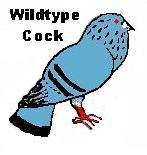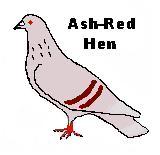Genotype & Phenotype
To achieve a modicum of breeding success, it is important that breeders understand the difference between - the reproductive potential and the external appearance of an individual; whether it be plant or animal.
The genetic constitution, or genotype, represents the sum total of an individuals breeding potential. That same individual's entire genetic package - in a pre-orchestrated, cumulative action - is the primary force that produces the characteristics of that individual. However, it may possess many genes that play no role toward the expression of its phenotype, but when passes to its offspring may produce characteristics not seen in the parent.
Generally, the offspring receives (inherits) half of its genes from each parent. It is the combined actions of countless numbers of genes that produce the observable characteristics we see and evaluate.
Only the genes (not the characteristics) are passed on to the offspring; which in turn produce the characteristics of the new individual. For example: Silky plumage in pigeons is not inherited; but the gene that produces the silky plumage is inherited. The silky plumage is part of its phenotype and the gene that produced it is part of its genotype.
With some experience, parts of a birds genotype can be determined by its outward appearance. Breeding tests may be necessary to determine more about a birds genotype. The two examples below have different phenotypes as well as different genotypes; without breeding records, a breeder can only rely on the birds outward appearance (phenotype) to determine, only part, of its genotype.
 .
.

